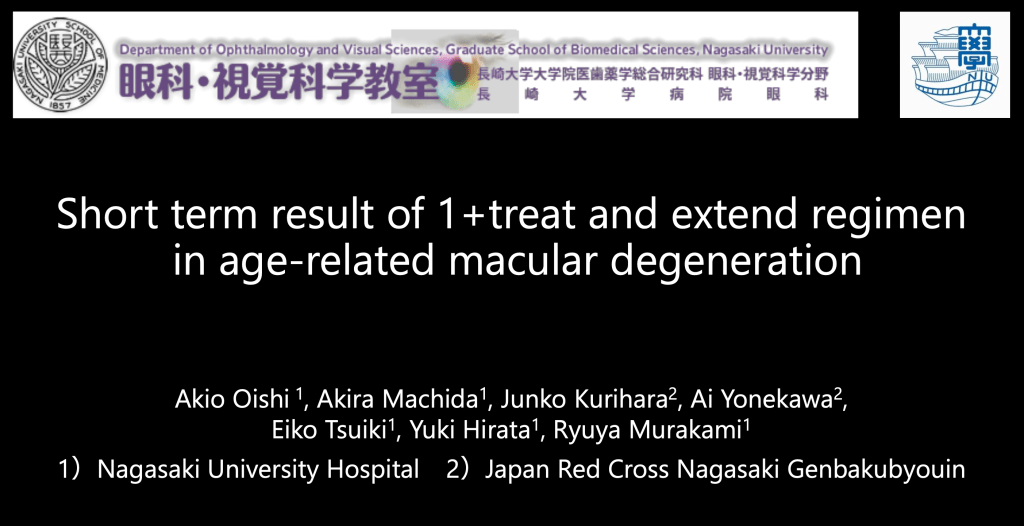Norimitsu Ban, MD, PhD
Keio University School of Medicine, Tokyo, Japan
FujiRetina Day 1 had an exciting morning of scientific paper sessions focusing on AMD. Dr. Akio Oishi from Nagasaki University first presented, “Short term result of 1+treat and extend regimen in age-related macular degeneration.” Dr. Oishi raised the question whether the typical loading phase is necessary for treatment-naïve cases. To investigate the effectiveness of a treatment protocol without a loading phase, Dr. Oishi performed a 1+treat and extend (TAE) regimen for treatment naïve AMD using faricimab. The treatment protocol included no loading phase with the second injection at week 4 followed by TAE. Treatment intervals were adjusted by 4 weeks based on the presence of fluid and hemorrhage, and intervals could be extended up to 24 weeks. If an 8-week extension between injections was not achieved after the fifth injection, the patient was switched to another anti-VEGF agent. Dr. Oishi reported the result of 26 eyes with more than 6 months of follow up and concluded that 1+TAE using faricimab reduced the required number of injections with comparable visual and anatomical outcomes to those of protocols with the typical loading phase. However, long-term results with a larger number of cases is necessary in the future.

Dr. Fumi Gomi from Hyogo Medical University in Japan then presented “Polypoidal choroidal vasculopathy in different races.” This was a collaboration with Northwestern University. She discussed the clinical characteristics of treatment-naïve, polypoidal choroidal vasculopathy (PCV) in three tertiary care settings from 2 countries (Chicago, Illinois, USA and Nishinomiya, Japan). This study was a retrospective, multicenter, consecutive case series. A total of 126 patients with treatment-naïve PCV-46 in Chicago and 80 in Nishinomiya-were identified. The proportion of PCV in patients with neovascular age-related macular degeneration was lower in Chicago than Nishinomiya (10.8% vs. 36.9%). Patients in Chicago had a significantly higher prevalence of soft drusen (50.0% vs 25.0%, p = 0.006), intraretinal cysts (37.0% vs 15.0%, p = 0.008), and a significantly lower prevalence of pachyvessels (41.3% vs 62.5%, p = 0.03). At baseline, presenting vision for patients in Chicago was worse than in Nishinomiya (mean log MAR: 0.609 vs. 0.312, p < 0.001). Ninety-five eyes were followed for more than one year. The Nishinomiya group received a higher rate of combination therapy (61.0%) compared to the Chicago group (5.3%). Vision and central foveal thickness at month 12 were significantly improved from baseline in both the Chicago (p = 0.009 and p = 0.01) and Nishinomiya groups (both p < 0.001). Dr. Gomi’s study highlights interesting differences between these populations in the proportion of PCV, clinical findings, and treatments.